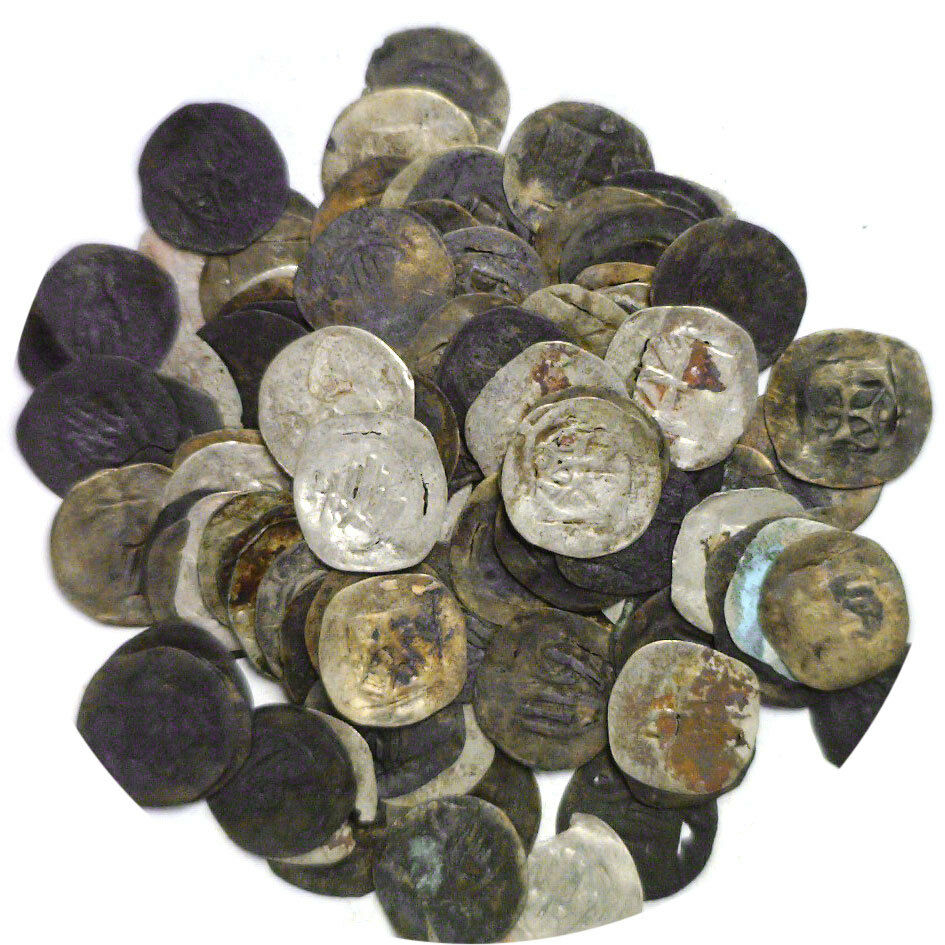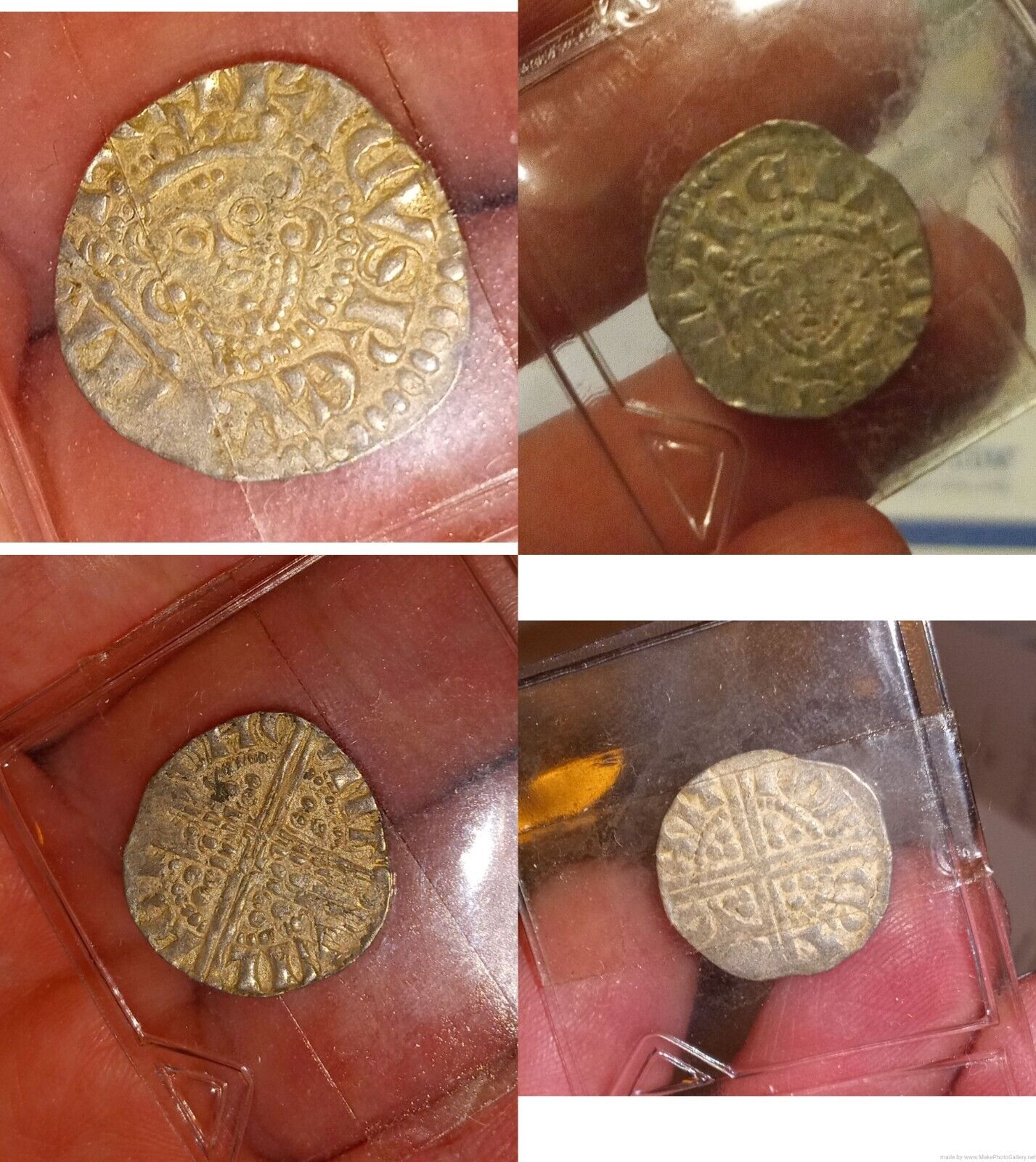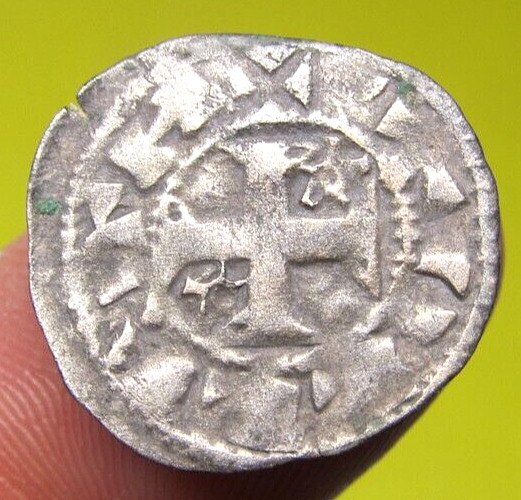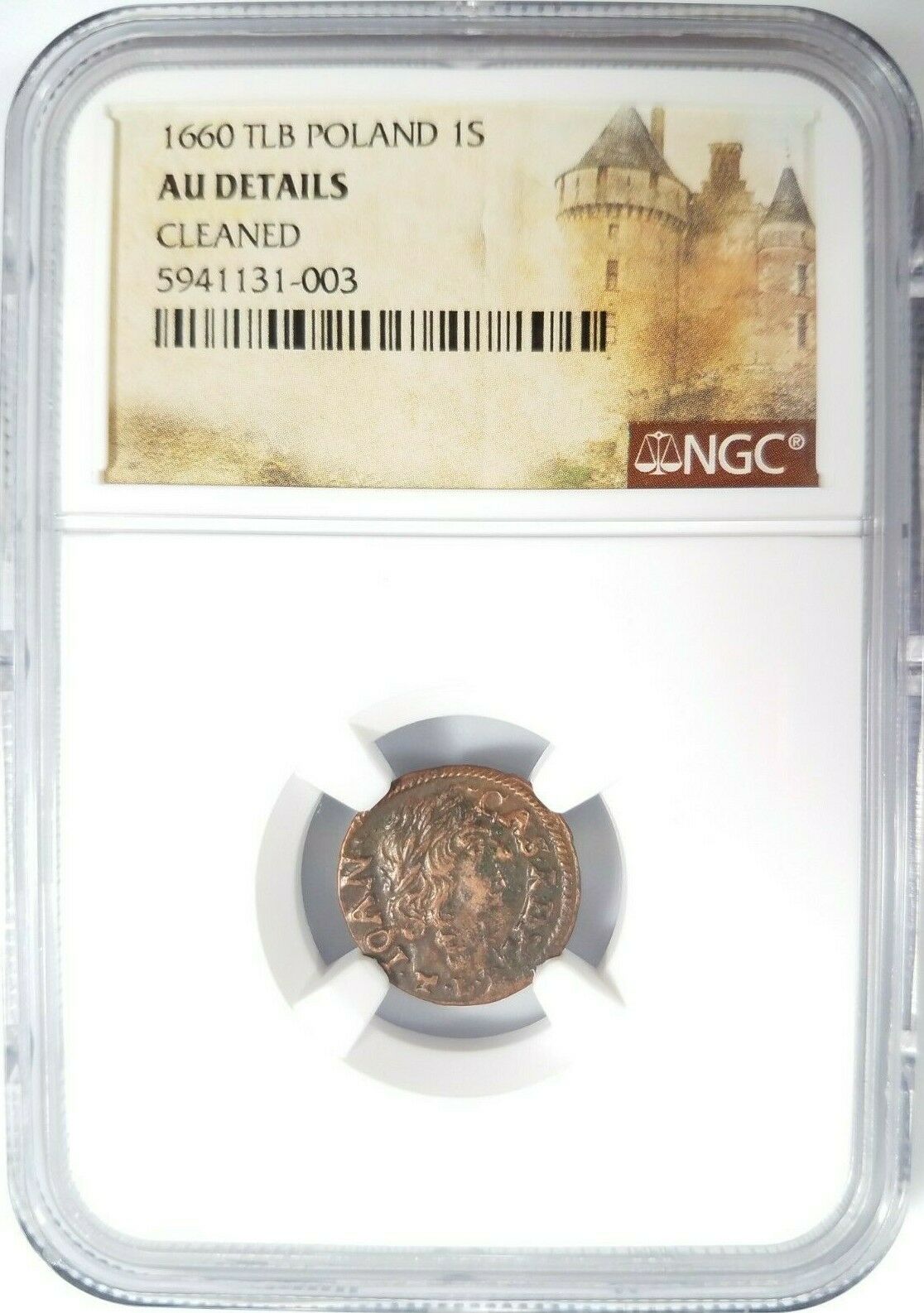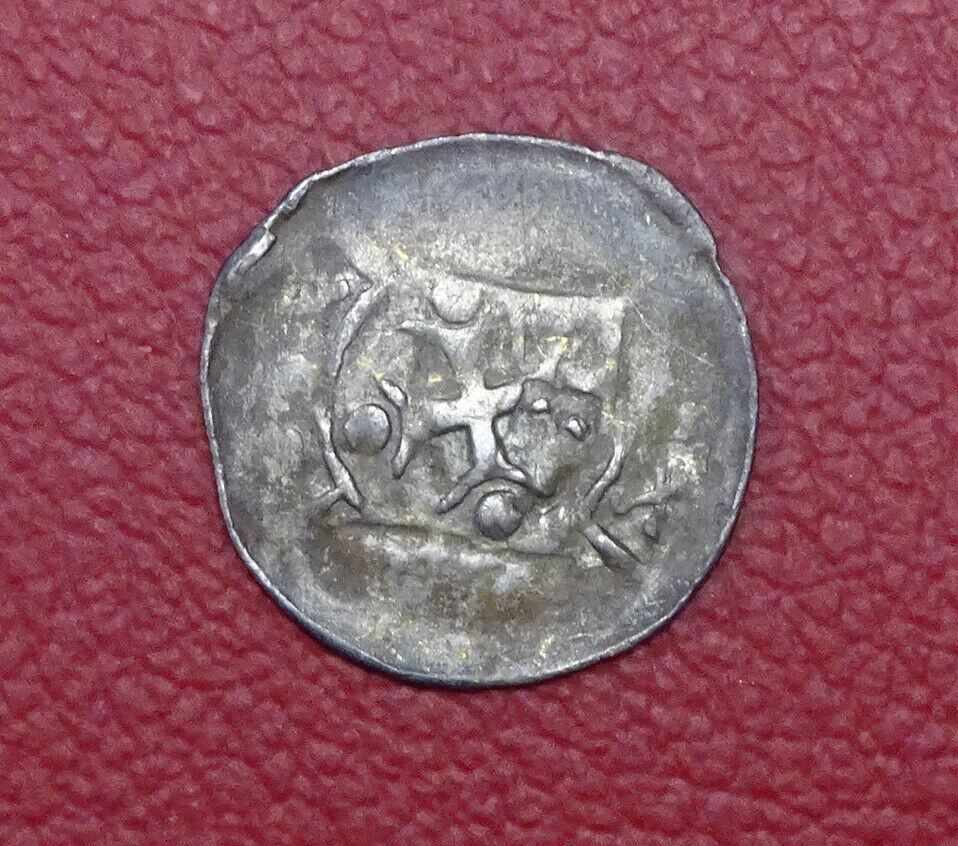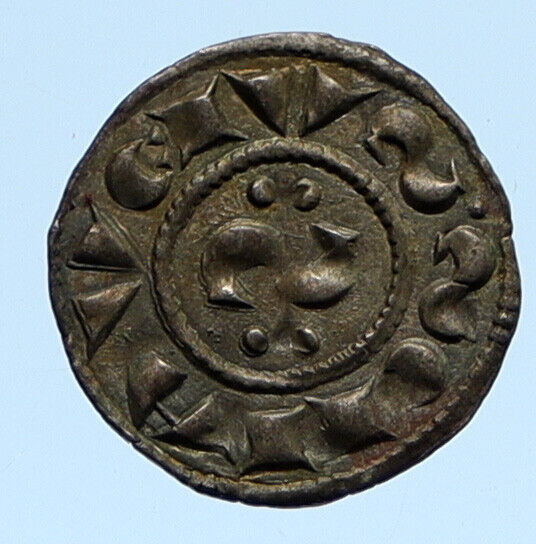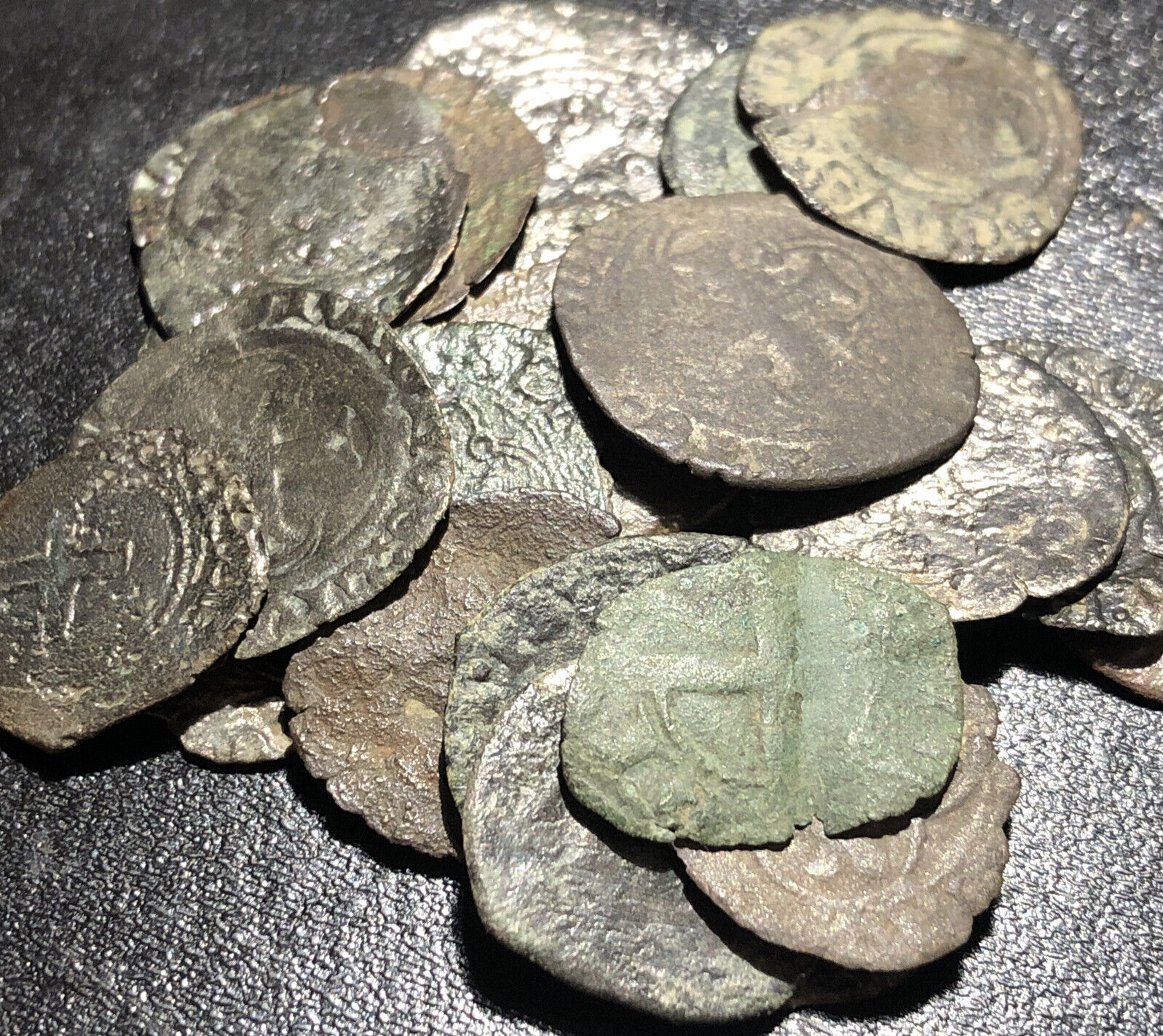-40%
1500s France Francois I Liard Dauphine Medieval Crusaders Fish Silver Coin
$ 15.83
- Description
- Size Guide
Description
Type :Liard du Dauphiné à la croisette
Date:
(1543-1547)
Date:
n.d.
Mint name / Town :
Grenoble
Quantity minted :
1379744
Metal :
billon
Millesimal fineness :
179 ‰
Diameter :
16,5 mm
Orientation dies :
7 h.
Weight :
0,87 g.
OBVERSE
Obverse legend :
(ROSE) FRANCI.[...] (MM), (N RÉTROGRADE).
Obverse description :
Dauphin à gauche.
Obverse translation :
(François, par la grâce de Dieu, roi des Francs).
REVERSE
Reverse legend :
(FLEUR) S. NO[....]ENED. (MM).
Reverse description :
Croix plaine alésée ; au-dessous la lettre d'atelier.
Reverse translation :
(Béni soit le nom du Seigneur).
HISTORICAL BACKGROUND
FRANCOIS IER RESTORING THE LETTERS
(01/01/1515-31/03/1547)
The advent of Francis I in France traditionally marks the beginning of the Ancien Régime, without being able to understand how it differs from the Middle Ages. The new era is characterized mainly by the exaltation of the person of the king, to the detriment of more abstract concepts (the Throne, Crown). Monarchical religion then organized around an incarnation: heroized, sometimes identified Caesar, sometimes the Gallic Hercules, Francis stands out as a warrior and as a judge, at once king of war, king of arts and King of glory. Around him, creating a first embryo Court first tag. This is when it is born "state ceremonial" that American historians have made it one of their main objects of study. Born in Cognac in 1494, Francis was the son of Charles of Valois, Comte d'Angoulême and Louise of Savoy. Step-son of Louis XII, whom he had married the daughter of Claude de France, he succeeded him in 1515, in the absence of direct male heir of the deceased. The new king continued the policy of his predecessor Italian. The first year of the reign of reign was marked by a first descent in the Peninsula with the victory of Marignan against the Swiss and the conquest of the Milanese. The following year, Francis concluded with Pope Leo X the Concordat of Bologna, which made the king master of episcopal appointments in his kingdom, and signed a perpetual peace with the Swiss. In 1519, the death of Maximilian I, King of France intrigued for the imperial crown, but it returned to the man who would be his great rival Charles V. The prince meets two legacies: a "Burgundian" Imperial, comes from his father, Philip the Handsome and his grandfather, the Emperor Maximilian: these are the remains of the possessions of Charles the Bold (Flanders, Franche-Comté), the areas of Habsburg (Austrian duchies, Lower Alsace) and the imperial crown of the Holy Roman Empire, the second Mediterranean and Spanish, comes from his mother, Juana la Loca: these are Castile, the Aragon and Iberian "kingdoms" attached to them, it is the Italian possessions (Milan, Kingdom of Naples), which will soon also India, whose conquest and the organization continues under the reign of Emperor. Having failed to forge an alliance with the king of England, Henry VIII (Camp cloth of gold, 1520), betrayed by the Constable de Bourbon, his principal vassal, Francis engaged in a tough fight against the Imperials, all in both in the east of France and Italy. In 1525, after taking over Milan, the king was defeated and taken prisoner at Pavia. In his absence, Louise of Savoy exercised the regency. Captive in Spain, François there signed the Treaty of Madrid (1526), he renounced his release from. The war continued, marked by the sack of Rome by the Imperial (1527). At Peace of Cambrai (1529), France and Italy renounced Francis married Eleanor of Austria, sister of Charles V.. The war resumed in 1536, after Francis had forged alliances with England, Sweden, the German Protestants and the Ottoman Empire. Trier and battles alternated until the Treaty of Crespy (1544) with the Emperor and Ardres (1546) with England, who had changed sides in the meantime. In this uncertain balance of its foreign policy, the king could oppose the more brilliant, its internal management: protection given to the arts and letters, creation of the Collège de France (1529) Ordinance of Villers-Cotterets (1539), establishing civil status and requiring the use of French in official documents. Unlike other European monarchies (the Tudors for example), the French monarchy enjoyed in the early sixteenth century of undisputed legitimacy rooted in the distant past. Princes authoritarian, François I and his son took the opportunity to strengthen the royal power. The Council began to take shape, and the Secretaries of State appeared. Without disappearing, representative institutions are not able to worry a monarchy that seems full of life and health. The reign of Francis I therefore ultimately appears as an early age of absolutism.


